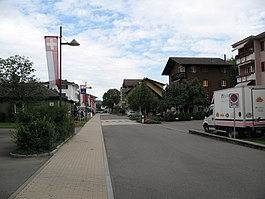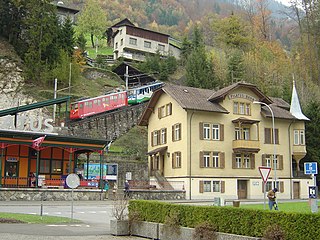
Alpnach is a village in the canton of Obwalden in Switzerland. It comprises the villages of Alpnach Dorf, Alpnachstad and Schoried.

Engelberg is a village resort and a municipality in the canton of Obwalden in Switzerland. Alongside the central village of Engelberg, the municipality encompasses additional settlements, including Grafenort, Oberberg and Schwand.

Beckenried is a municipality in the canton of Nidwalden in Switzerland.
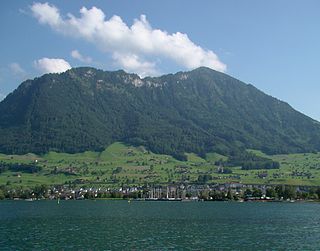
Buochs is a municipality in the canton of Nidwalden in Switzerland.

Dallenwil is a municipality in the canton of Nidwalden in Switzerland.

Hergiswil is a municipality in the canton of Nidwalden in Switzerland.

Wolfenschiessen is a village and municipality in the canton of Nidwalden in Switzerland. Besides the village of Wolfenschiessen itself, the municipality includes the settlements of Altzellen, Büren ob dem Bach, Dörfli, and Oberrickenbach, together with a large area of high alpine land, mountains, lakes, and glaciers.

Reute is a municipality in the canton of Appenzell Ausserrhoden in Switzerland.

Sils im Engadin/Segl, often also as Sils i.E./Segl, is a municipality and village in the Maloja Region, Upper Engadine in the Swiss canton of the Grisons.

Bever is a municipality in the Maloja Region in the Swiss canton of Graubünden.

Falera is a municipality in the Surselva Region in the Swiss canton of Graubünden.

Churwalden is a municipality in the Plessur Region in the canton of Graubünden in Switzerland. It incorporates the former municipalities of Malix and Parpan.

Flüelen is a municipality in the canton of Uri in Switzerland.

Sils im Domleschg is a municipality in the Viamala Region in the Swiss canton of Graubünden.
Grono is a municipality in the Moesa Region in the Italian speaking part of the Swiss canton of Grisons. On 1 January 2017 the former municipalities of Leggia and Verdabbio merged into the municipality of Grono.

Mettauertal is a municipality in the district of Laufenburg in the canton of Aargau in Switzerland. On 1 January 2010 the municipalities of Hottwil, Etzgen, Mettau, Oberhofen and Wil merged to form the new municipality of Mettauertal.
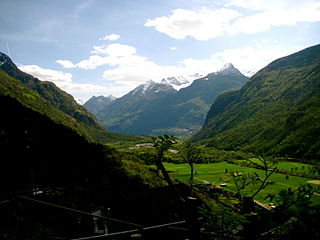
Serravalle is a municipality in the district of Blenio in the canton of Ticino in Switzerland. It was formed on 1 April 2012 by the merger of the former municipalities of Malvaglia, Semione and Ludiano.

Landquart is a municipality in the Landquart Region in the Swiss canton of Graubünden. It was formed when the municipalities of Igis and Mastrils merged on 1 January 2012 into the new municipality of Landquart. The municipality "Landquart" draws its name from a locality in the former municipality of Igis.
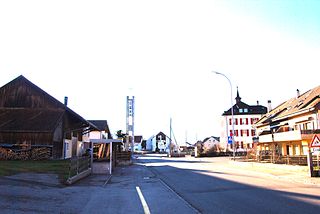
Val Terbi is a municipality in the district of Delémont in the canton of Jura in Switzerland. The municipalities of Montsevelier, Vermes and Vicques merged on 1 January 2013 into the new municipality of Val Terbi. On 1 January 2018 the former municipality of Corban merged into the municipality of Val Terbi.
There are 26 constituencies in Switzerland – one for each of the 26 cantons of Switzerland – for the election of the National Council and the Council of States.
